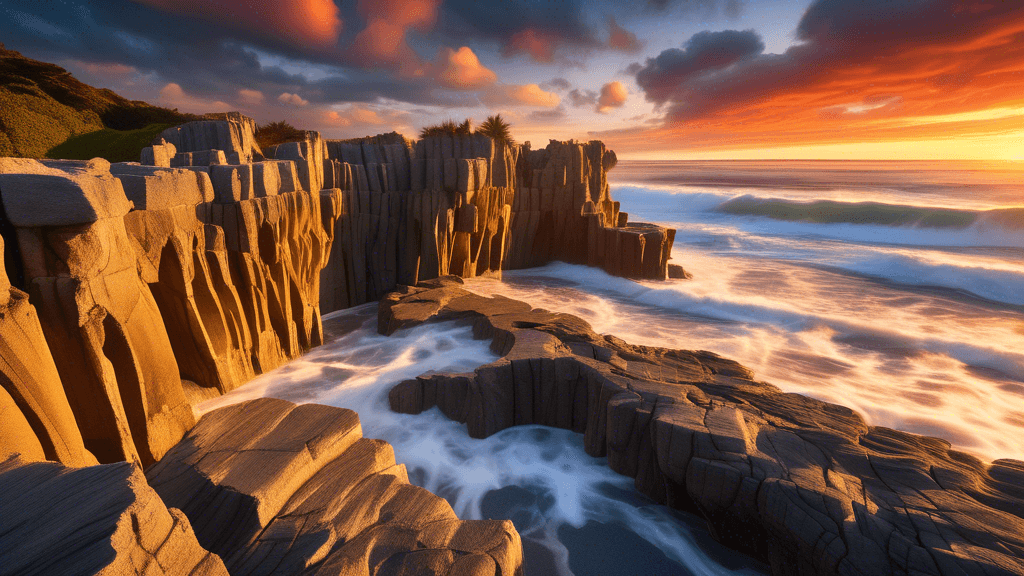
Capturing Time: Exploring New Zealand's Geological Marvels Through Photography
Share
An Introduction to New Zealand's Geological Marvels
New Zealand, renowned for its captivating landscapes and geothermal wonders, offers an unparalleled canvas for photographers and nature enthusiasts alike. From the bubbling mud pools of Rotorua to the majestic fjords of Milford Sound, this island nation serves as a living showcase of Earth's dynamic geological history. But what makes New Zealand's geology so unique, and how can photography play a pivotal role in both exploring and preserving these natural treasures?
The Geological Diversity of New Augustine
New Zealand sits on the Pacific Ring of Fire, where tectonic movements shape the landscape dramatically. This geological dynamism gives rise to a variety of phenomena ranging from active volcanoes and geothermal vents to glaciated valleys and ancient fjords.
- Volcanic Plateaus: The North Island's central plateau features active volcanoes such as Mount Ruapehu and Mount Ngauruhoe, which Peter Jackson famously used to depict Mount Doom in the Lord of the Rings films.
- Fjords: The South Island's Fiordland National Park boasts some of the world's most breathtaking fjords, carved by glaciers over millions of years.
- Geothermal Areas: Rotorua and Taupo are replete with hot springs, geysers, and mud pools, direct evidence of the Earth's internal heat close to the surface.
Why Photography Matters
Photography not only captures the beauty of these landscapes but also plays a crucial role in their conservation. Through compelling images, photographers can evoke emotions and provoke conversations around the need for environmental preservation. They document the current state of these landscapes, providing a valuable record for future generations and helping to raise awareness about the impacts of climate change on these fragile ecosystems.
Techniques for Capturing New Zealand's Landscapes
The Right Gear
Choosing the right equipment is critical when photographing New Zealand's varied landscapes. A wide-angle lens, for instance, is essential for capturing expansive scenes such as those found in Fiordland. A tripod can help stabilize your camera during long exposures, especially useful in low light conditions of dawn or dusk.
Understanding Natural Light
Natural light plays a key role in landscape photography. The soft light of golden hour—the hour after sunrise and before sunset—helps illuminate the landscapes with a warm glow, enhancing colors and casting long shadows that highlight the contours of the terrain.
Composition Techniques
Effective composition involves more than just positioning elements within the frame. It's about telling a story. For example, using foreground elements can add depth to a shot of a geothermal pool, while leading lines like rivers or paths can draw the viewer’s eye into the scene, creating a sense of journey and exploration.
Environmental Considerations in Photography
When photographing sensitive environments, it is paramount to practice ethical photography. This includes staying on marked paths, avoiding disturbing wildlife, and leaving no trace of your visit. Photographers hold a responsibility to not only capture the beauty of nature but also to protect it.
Contributing to Conservation Through Photography
Many photographers engage with local conservation efforts, using their images to support initiatives aimed at protecting New Zealand’s natural heritage. By showcasing the fragile beauty of these areas, photographers can influence public perceptions and policy, contributing to the ongoing efforts to safeguard these environments.
Conclusion: The Role of Photographers
Photographers are not just artists but also storytellers and conservationists. In New Zealand, the unique interconnectedness of dynamic geological features and rich biodiversity presents a rare opportunity to capture the essence of Earth's geological drama. With every click of the shutter, photographers have the chance to contribute to a global understanding of geological phenomena and the urgent need to protect them.
If you're a photographer inspired by nature's marvels, consider how your images can not only capture the beauty of such landscapes but also play an integral role in their conservation. Are you ready to explore and protect the Earth's wonders with your camera?





